The Manual - G.A. Pettigiani - 2010
Moderador: Rein
- Rein
- Usuario Colaborador

- Mensajes: 6258
- Registrado: 13 Mar 2009 15:59
- Ubicación: Leiden, Netherlands
- Contactar:
Re: The Manual - G.A. Pettigiani - 2010
National papers - Zárate
This group of papers is even more difficult than the coated papers [tizado] as the design of the watermark is rather vaguely present, the paper mesh can only be certified when using x-ray type methods as by computer scanning. Whaty is supposed to help is that the diameter of the suns are a lot smaller than in the imported papers [except for the Austrian paper of 1937!].
So how can we get along???
N = Zárate Rayado Horizontal , introdued on the 21.08.1953 for several values of the Evita definitives: 1c, 10c, 20c, 25c and 50c.
Commemoratives mentioned by Pettigiani:
MT 543 = 13.07.1954 Commercial Exchange Market in photogravure
MT 544 = 26.07.1954 2nd Anniversary Death E. Perón in photogravure
MT 545 = 26.08.1954 Cereals Exchange Market in photogravure
According to Pettigiani of the above mentioned Evita's only the 10c and 20c do occur also in "O" [Zárate grené]. I can show you the 25c as well!!!
This "N" is assigned watermark type VI thus contrasting with all the other Zárate papers that have type V. This implies that there should have been a second dandy-roll used by Zárate!
So far we all had agreed there is only ONE!
All Zárate papers have an orthogonal watermark, some have a symmetrical paper mesh, some an asymmetrical one. N has the asymmetrical!
to be continued ....
This group of papers is even more difficult than the coated papers [tizado] as the design of the watermark is rather vaguely present, the paper mesh can only be certified when using x-ray type methods as by computer scanning. Whaty is supposed to help is that the diameter of the suns are a lot smaller than in the imported papers [except for the Austrian paper of 1937!].
So how can we get along???
N = Zárate Rayado Horizontal , introdued on the 21.08.1953 for several values of the Evita definitives: 1c, 10c, 20c, 25c and 50c.
Commemoratives mentioned by Pettigiani:
MT 543 = 13.07.1954 Commercial Exchange Market in photogravure
MT 544 = 26.07.1954 2nd Anniversary Death E. Perón in photogravure
MT 545 = 26.08.1954 Cereals Exchange Market in photogravure
According to Pettigiani of the above mentioned Evita's only the 10c and 20c do occur also in "O" [Zárate grené]. I can show you the 25c as well!!!
This "N" is assigned watermark type VI thus contrasting with all the other Zárate papers that have type V. This implies that there should have been a second dandy-roll used by Zárate!
So far we all had agreed there is only ONE!
All Zárate papers have an orthogonal watermark, some have a symmetrical paper mesh, some an asymmetrical one. N has the asymmetrical!
to be continued ....
- Rein
- Usuario Colaborador

- Mensajes: 6258
- Registrado: 13 Mar 2009 15:59
- Ubicación: Leiden, Netherlands
- Contactar:
Re: The Manual - G.A. Pettigiani - 2010
O = Zárate Grené, introduced in 1954, having clear rhombos (hence the name).
Reference point in the commemoratives is
MT 559 = 14.04.1956 Polyomyelitis
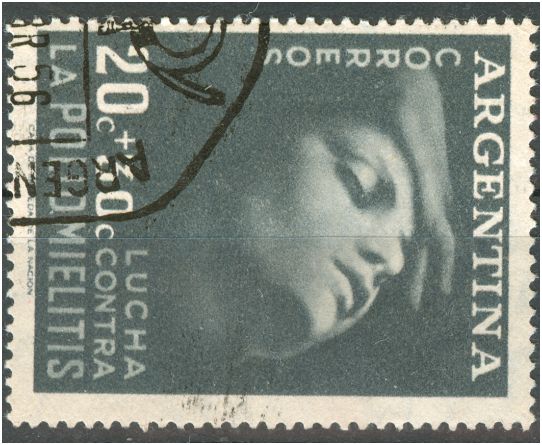
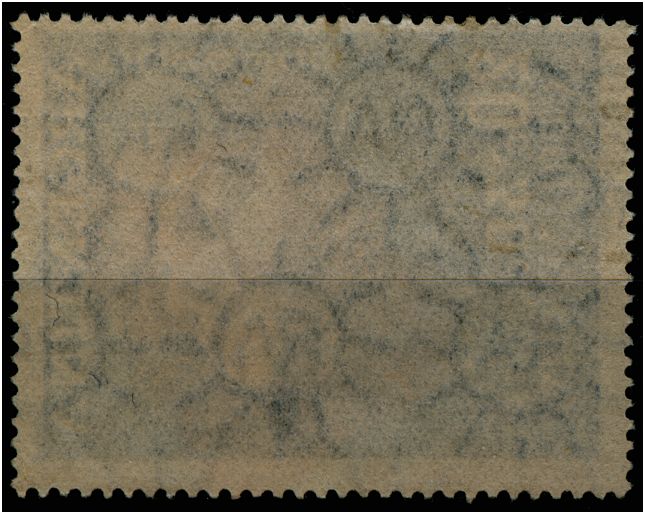
to be continued ...
Reference point in the commemoratives is
MT 559 = 14.04.1956 Polyomyelitis


to be continued ...
- Rein
- Usuario Colaborador

- Mensajes: 6258
- Registrado: 13 Mar 2009 15:59
- Ubicación: Leiden, Netherlands
- Contactar:
Re: The Manual - G.A. Pettigiani - 2010
P = Granulado vertical, introduced also in 1954, having less clear rhombos if at all (hence the name).
Reference point in the commemoratives is
MT 612 = 12.12.1959 San José de Flores
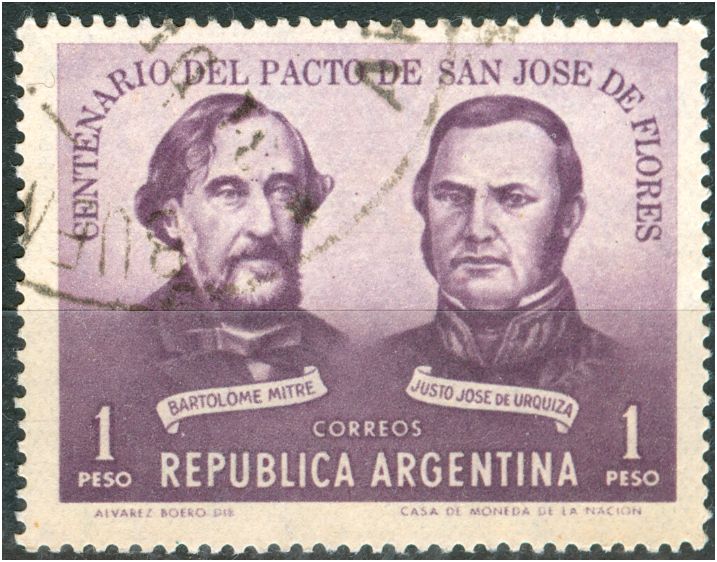
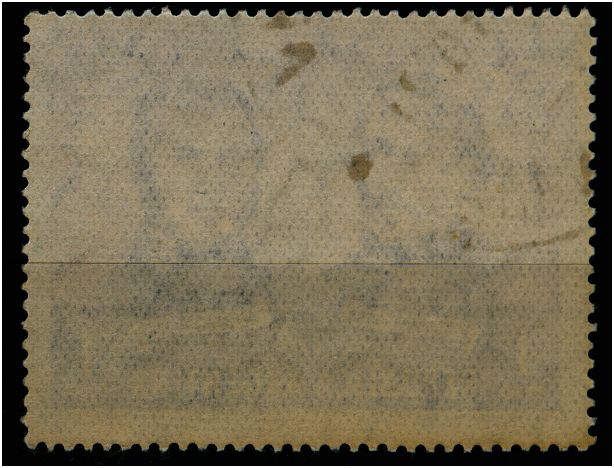
to be continued ...
Reference point in the commemoratives is
MT 612 = 12.12.1959 San José de Flores


to be continued ...
- Rein
- Usuario Colaborador

- Mensajes: 6258
- Registrado: 13 Mar 2009 15:59
- Ubicación: Leiden, Netherlands
- Contactar:
Re: The Manual - G.A. Pettigiani - 2010
Q = Zárate blanco, introduced in 1955, having a much whiter appearance (hence the name).
Reference point in the commemoratives is
MT 601 = 03.10.1959 Red Cross
symmetrical:
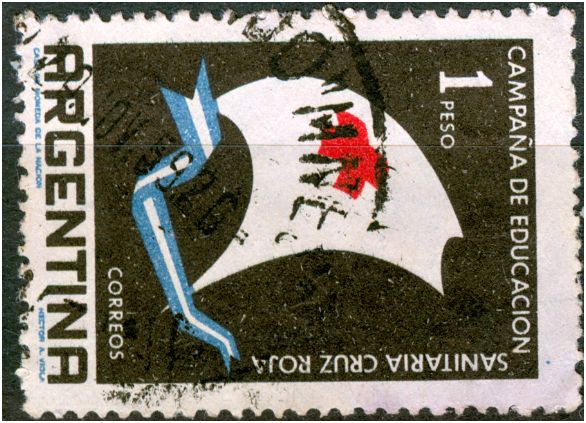
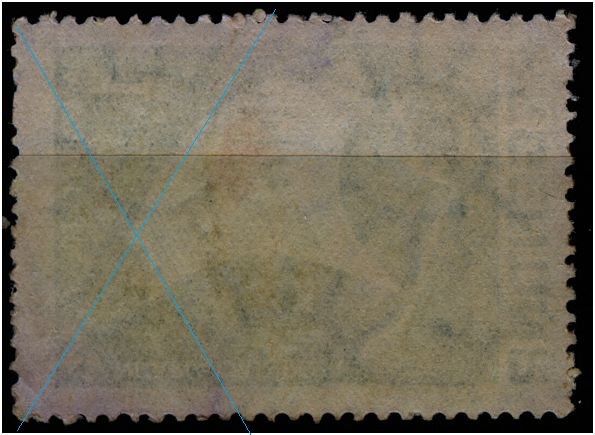
asymmetrical:
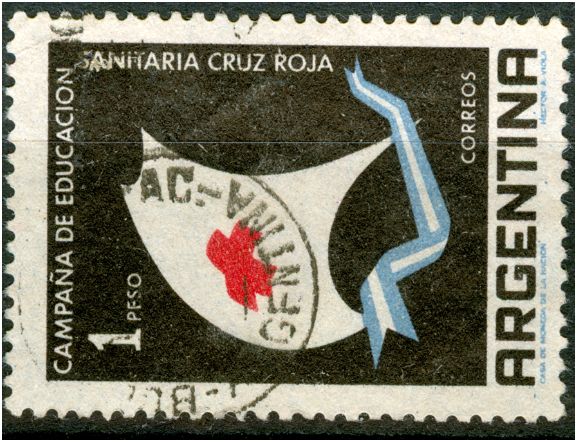
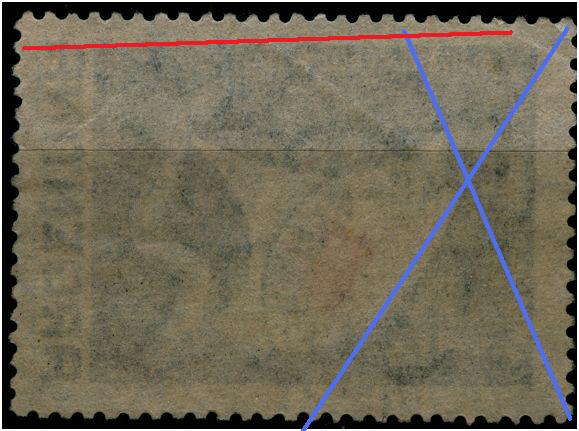
For Dario Bardi the Red Cross stamp is the reference point for the asymmetrical version: ZA 3 = Zárate Blanco Rayado.
Pettigiani is in doubt how to classify this stamp- he even thinks of a Tela! In his book there is nothing like Bardi's ZA 4 = Zárate Blanco Granulado!
to be continued ...
Reference point in the commemoratives is
MT 601 = 03.10.1959 Red Cross
symmetrical:


asymmetrical:


For Dario Bardi the Red Cross stamp is the reference point for the asymmetrical version: ZA 3 = Zárate Blanco Rayado.
Pettigiani is in doubt how to classify this stamp- he even thinks of a Tela! In his book there is nothing like Bardi's ZA 4 = Zárate Blanco Granulado!
to be continued ...
- Rein
- Usuario Colaborador

- Mensajes: 6258
- Registrado: 13 Mar 2009 15:59
- Ubicación: Leiden, Netherlands
- Contactar:
Re: The Manual - G.A. Pettigiani - 2010
What remains unclear in the description of the National Papers is the aspect of had the felt side of the paper been printed or not?
Predominantly Zárate has the wire side printed and the felt side received the gum - the watermark letters we see from the back read like AЯ .... The paper itself is transposed i.e. the gummed side of the stamp is the felt side of the paper, the front of the stamp shows missing fibres.
What this means is that the dandy-roll reads RA!!! Not AЯ as in practically all other watermarks! The dandy-roll reading RA results in the felt side having AЯ and as the felt side has been gummed we indeed read AЯ from the back of the stamp!
All Zárate papers have in common a watermark that comes from a dandy-roll reading RA ...
Why couldn't Pettigiani say a word about this aspect???
Having the felt side at the back and the wire side at the front also explains the indents of the wire so clearly visible at the front!
In the exceptional cases in the usage of the Zárate paper i.e. that when the paper got gummed - never simultaneously with the paper production - on the proper side i.e. the wire side, the watermark will read RA !
This is what the Argentine philatelist will call "filigrana traspuesta"
Dario Bardi in his 2008 Clasificacion had suggested that practically all Zárate paper had had "filigrana traspuesta". I read it as "papel traspuesto" in the sense that the felt side had got the gum. Later from the P&R Catalogue it became clear that the "traspuesta" referred to more exceptional cases... and not all of the printings....
The felt side being the gummed side has other consequences! It causes the back side of the stamp having a more closed surface and thus by default the paper mesh will be less visible and might be called "closed" or "cerrada"! Turning a "grené"
into a "granulado"...
Which makes the distinction between O and P less relevant...
to be continued ...
Predominantly Zárate has the wire side printed and the felt side received the gum - the watermark letters we see from the back read like AЯ .... The paper itself is transposed i.e. the gummed side of the stamp is the felt side of the paper, the front of the stamp shows missing fibres.
What this means is that the dandy-roll reads RA!!! Not AЯ as in practically all other watermarks! The dandy-roll reading RA results in the felt side having AЯ and as the felt side has been gummed we indeed read AЯ from the back of the stamp!
All Zárate papers have in common a watermark that comes from a dandy-roll reading RA ...
Why couldn't Pettigiani say a word about this aspect???
Having the felt side at the back and the wire side at the front also explains the indents of the wire so clearly visible at the front!
In the exceptional cases in the usage of the Zárate paper i.e. that when the paper got gummed - never simultaneously with the paper production - on the proper side i.e. the wire side, the watermark will read RA !
This is what the Argentine philatelist will call "filigrana traspuesta"
Dario Bardi in his 2008 Clasificacion had suggested that practically all Zárate paper had had "filigrana traspuesta". I read it as "papel traspuesto" in the sense that the felt side had got the gum. Later from the P&R Catalogue it became clear that the "traspuesta" referred to more exceptional cases... and not all of the printings....
The felt side being the gummed side has other consequences! It causes the back side of the stamp having a more closed surface and thus by default the paper mesh will be less visible and might be called "closed" or "cerrada"! Turning a "grené"
into a "granulado"...
Which makes the distinction between O and P less relevant...
to be continued ...
- Rein
- Usuario Colaborador

- Mensajes: 6258
- Registrado: 13 Mar 2009 15:59
- Ubicación: Leiden, Netherlands
- Contactar:
Re: The Manual - G.A. Pettigiani - 2010
The aspect discussed in the previous posting is just as important for the last group of papers dealt with in Pettigiani's book!
The no watermark papers also originate from the Zárater paper mills although from a much earlier period! In the 1945-1948 period practically all stamps were printed on paper without watermark. The paper mesh always reflects a wire structure that was symmetrical.
Pettigiani recognizes 2 main types - just as Dario Bardi did:
R = grené, i.e. the rhombos are very clear;
and
S = trama cerrada or "closed wire" were you can not see the rhombos; only during the 1947-1948 period.
The reference in the commemoratives is
MT 491 = 24.11.1947 Return of the Ashes of San Martin's parents, printed in offset-litho
This reference is a bit strange as other types of paper had been used as well for this stamp i.e Rayos Rectos Nitidos!
MT 488 = 05.10.1947 Fregat Sarmiento
MT 492 = 24.12.1947 5c Cruzada Escolar
can have both R and S! And the Cruzada Escolar exists also on Rayos Rectos Nitidos!
Pettigiani sees 3 subtypes of S - of which 2 show only very minute pin points when holding the stamps against a strong light source. And when there is a hue of sheen a reference was made to the Satinado. This subtype had also been called the Canadian paper believing it originates from Canada.
to be continued ...
The no watermark papers also originate from the Zárater paper mills although from a much earlier period! In the 1945-1948 period practically all stamps were printed on paper without watermark. The paper mesh always reflects a wire structure that was symmetrical.
Pettigiani recognizes 2 main types - just as Dario Bardi did:
R = grené, i.e. the rhombos are very clear;
and
S = trama cerrada or "closed wire" were you can not see the rhombos; only during the 1947-1948 period.
The reference in the commemoratives is
MT 491 = 24.11.1947 Return of the Ashes of San Martin's parents, printed in offset-litho
This reference is a bit strange as other types of paper had been used as well for this stamp i.e Rayos Rectos Nitidos!
MT 488 = 05.10.1947 Fregat Sarmiento
MT 492 = 24.12.1947 5c Cruzada Escolar
can have both R and S! And the Cruzada Escolar exists also on Rayos Rectos Nitidos!
Pettigiani sees 3 subtypes of S - of which 2 show only very minute pin points when holding the stamps against a strong light source. And when there is a hue of sheen a reference was made to the Satinado. This subtype had also been called the Canadian paper believing it originates from Canada.
to be continued ...
- Rein
- Usuario Colaborador

- Mensajes: 6258
- Registrado: 13 Mar 2009 15:59
- Ubicación: Leiden, Netherlands
- Contactar:
Re: The Manual - G.A. Pettigiani - 2010
The ashes of San Martin's parents:
No watermark, symmetrical paper mesh, longitudinal direction of paper - "M":
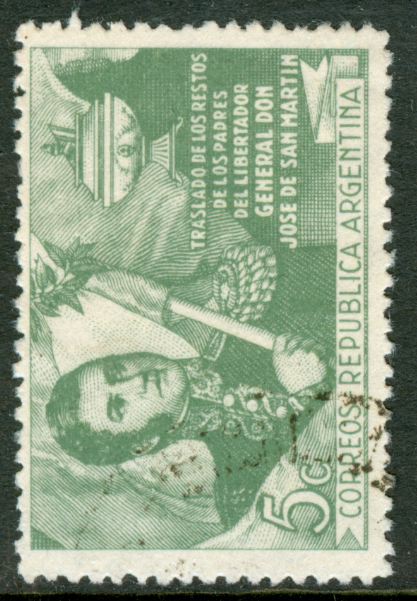
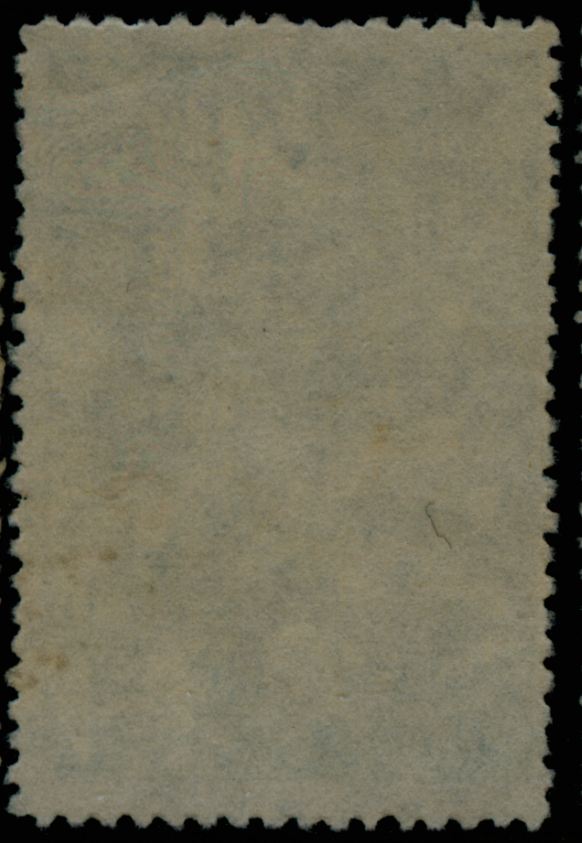
at first sight not a trace of paper mesh!
But with a latitudinal direction of paper - "m" we can already see the rhombos:
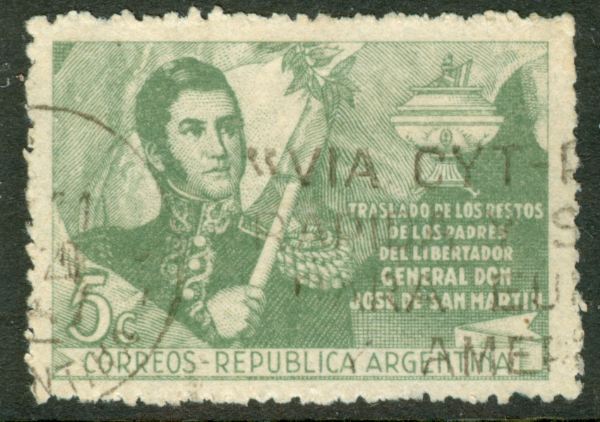
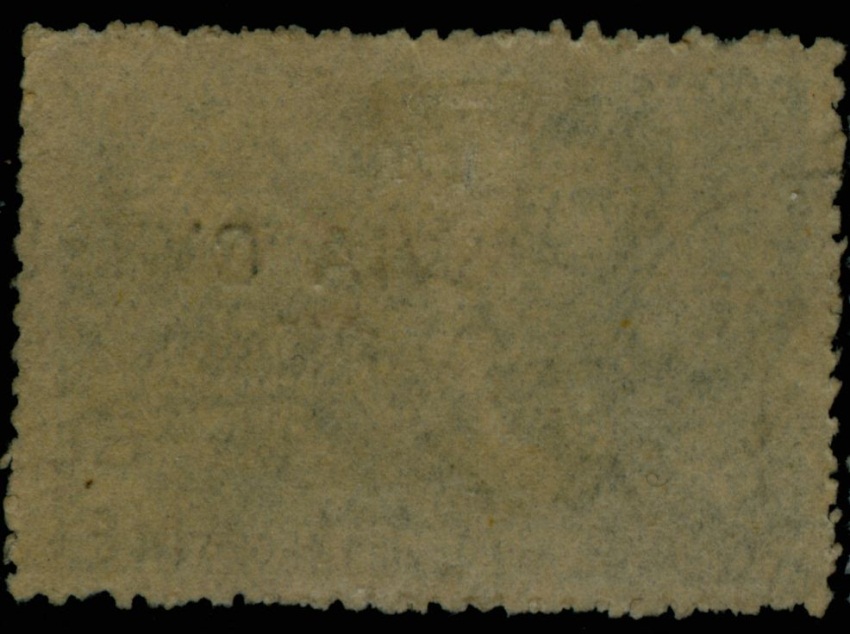
Combining the two:
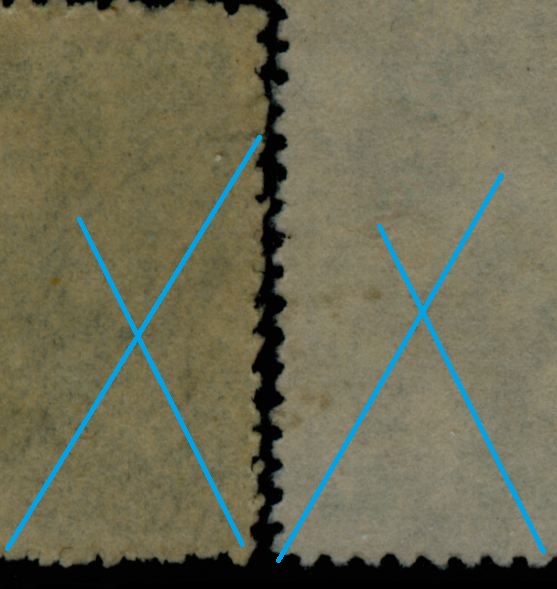
to be continued ...
No watermark, symmetrical paper mesh, longitudinal direction of paper - "M":


at first sight not a trace of paper mesh!
But with a latitudinal direction of paper - "m" we can already see the rhombos:


Combining the two:

to be continued ...
- Rein
- Usuario Colaborador

- Mensajes: 6258
- Registrado: 13 Mar 2009 15:59
- Ubicación: Leiden, Netherlands
- Contactar:
Re: The Manual - G.A. Pettigiani - 2010
The 5c Cruzada Escolar:
No watermark, symmetrical paper mesh, longitudinal direction of paper - "M":
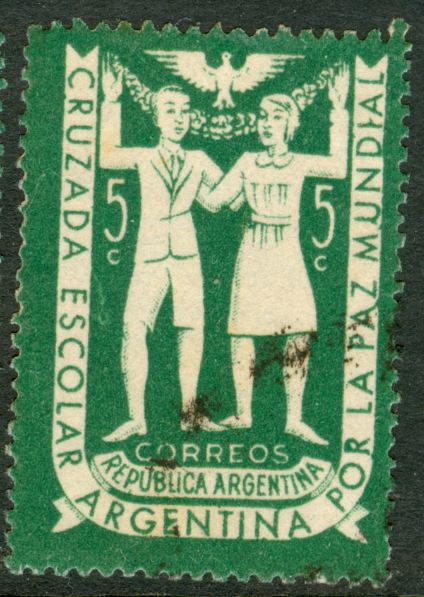
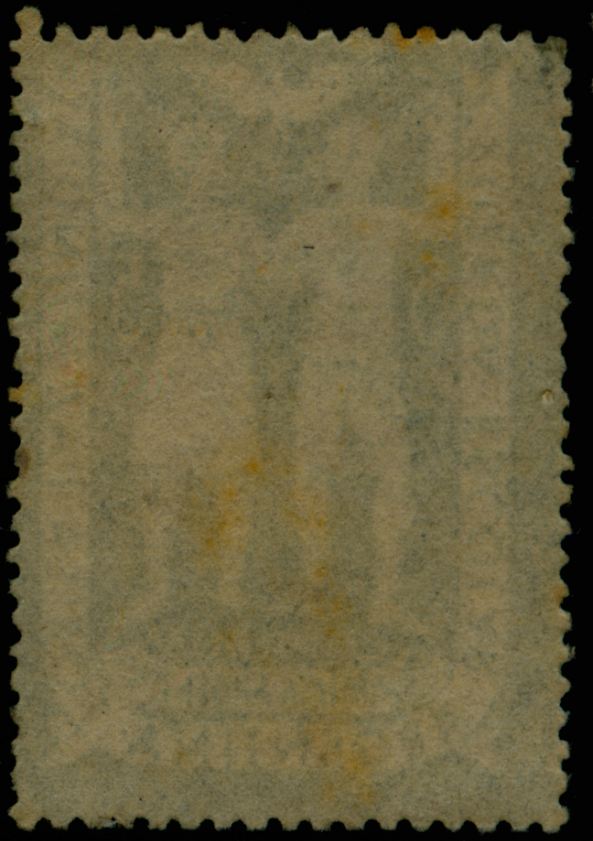
at first sight not a trace of paper mesh!
But with another stamp we can already see the rhombos:
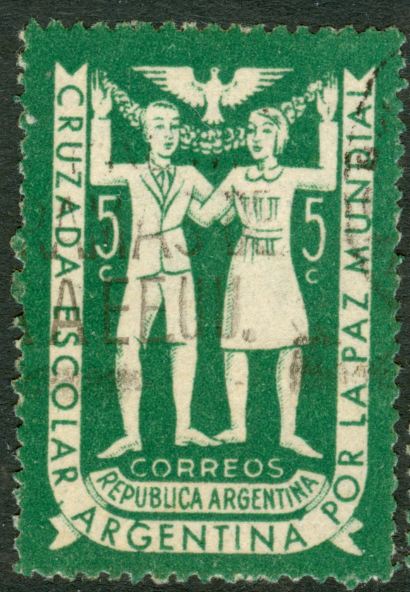
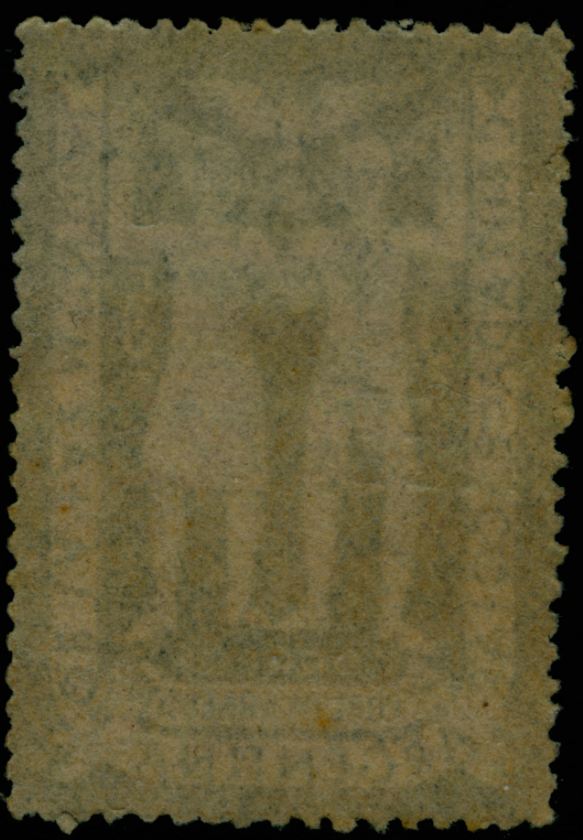
Combining the two:
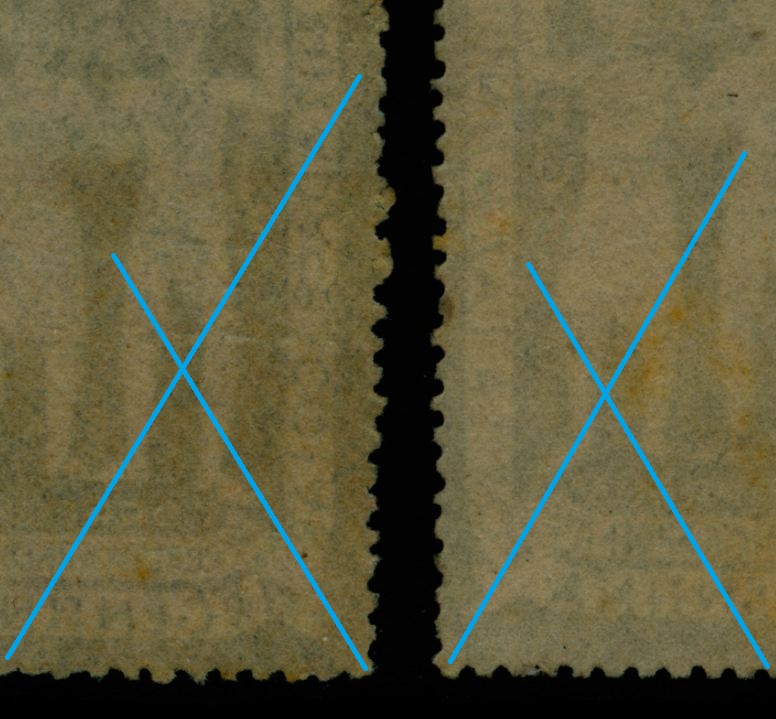
to be continued ...
No watermark, symmetrical paper mesh, longitudinal direction of paper - "M":


at first sight not a trace of paper mesh!
But with another stamp we can already see the rhombos:


Combining the two:

to be continued ...
- Rein
- Usuario Colaborador

- Mensajes: 6258
- Registrado: 13 Mar 2009 15:59
- Ubicación: Leiden, Netherlands
- Contactar:
Re: The Manual - G.A. Pettigiani - 2010
The 5c Fregat Sarmiento:
No watermark, symmetrical paper mesh, longitudinal direction of paper - "M":
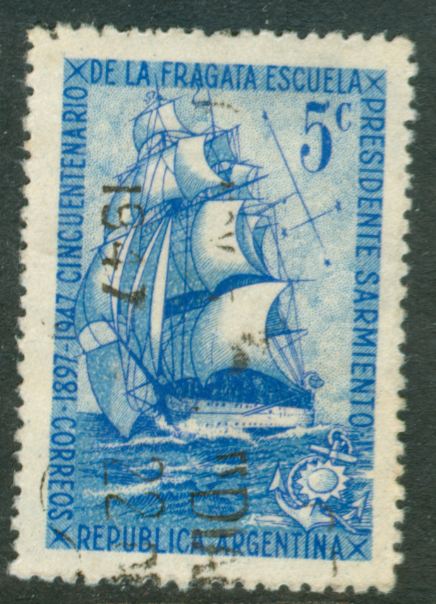
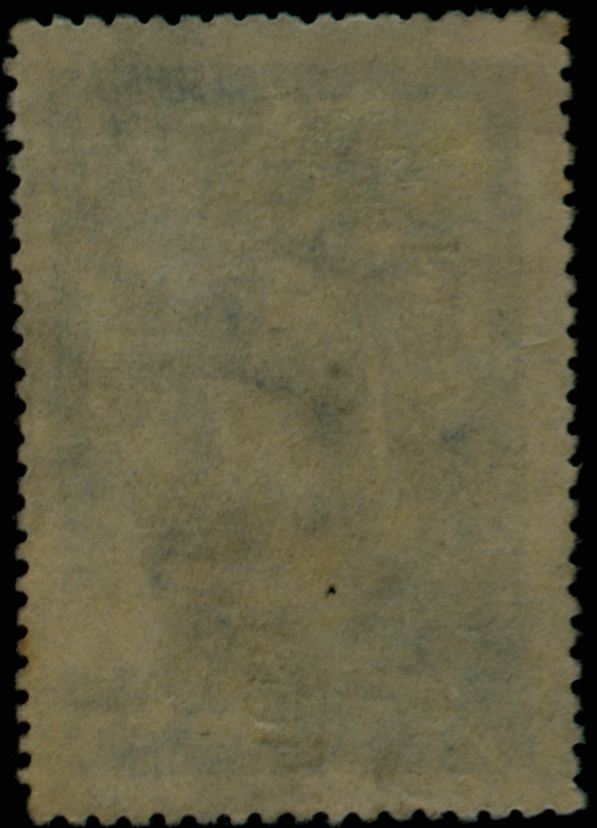
at first sight not a trace of paper mesh!
But with another stamp we can already see the rhombos:
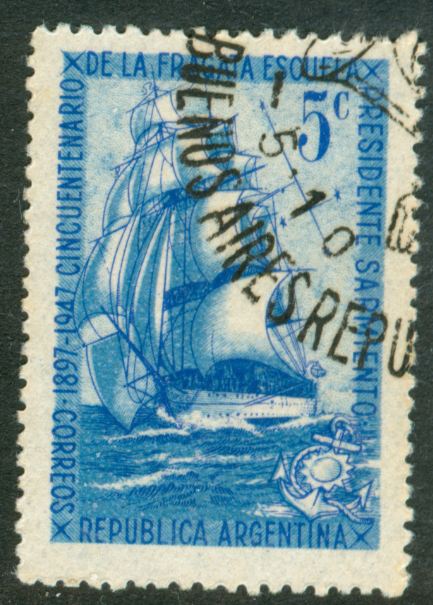
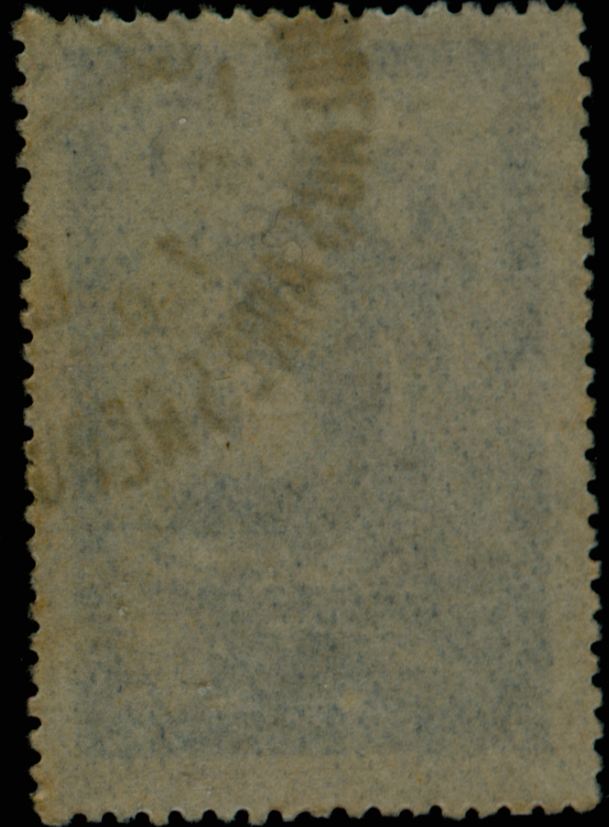
Combining the two:
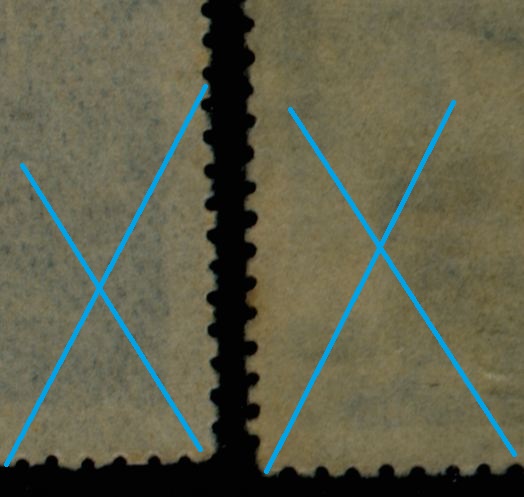
to be continued ...
No watermark, symmetrical paper mesh, longitudinal direction of paper - "M":


at first sight not a trace of paper mesh!
But with another stamp we can already see the rhombos:


Combining the two:

to be continued ...
- Rein
- Usuario Colaborador

- Mensajes: 6258
- Registrado: 13 Mar 2009 15:59
- Ubicación: Leiden, Netherlands
- Contactar:
Re: The Manual - G.A. Pettigiani - 2010
The 5c Antarctic 25.05.1947:
No watermark, symmetrical paper mesh, longitudinal direction of paper - "M":
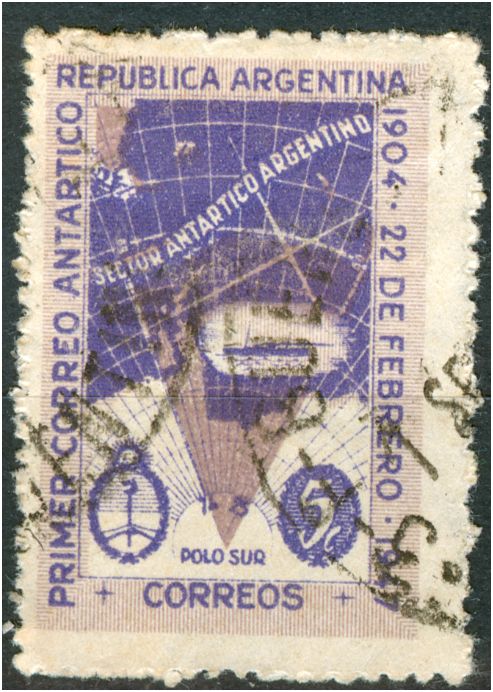
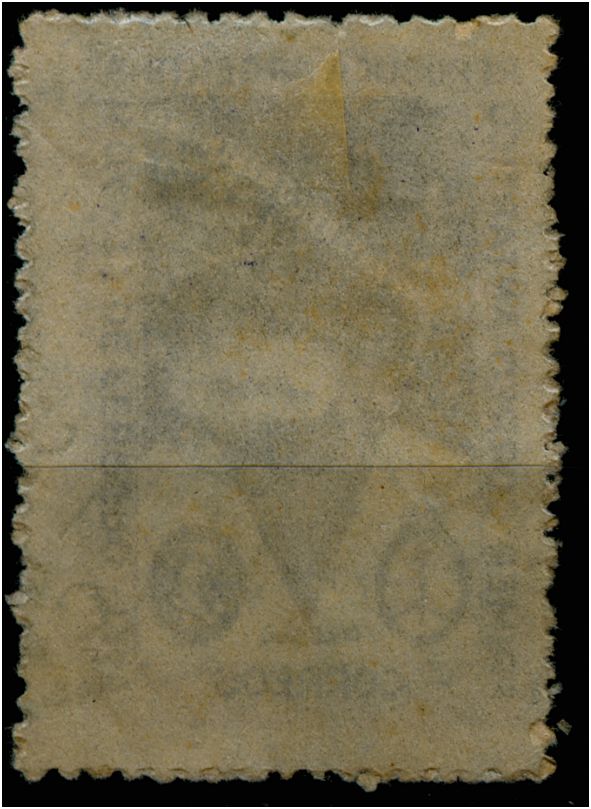
At first sight not a trace of paper mesh! Although!?!?
But at close distance we can see the tiny pin points!
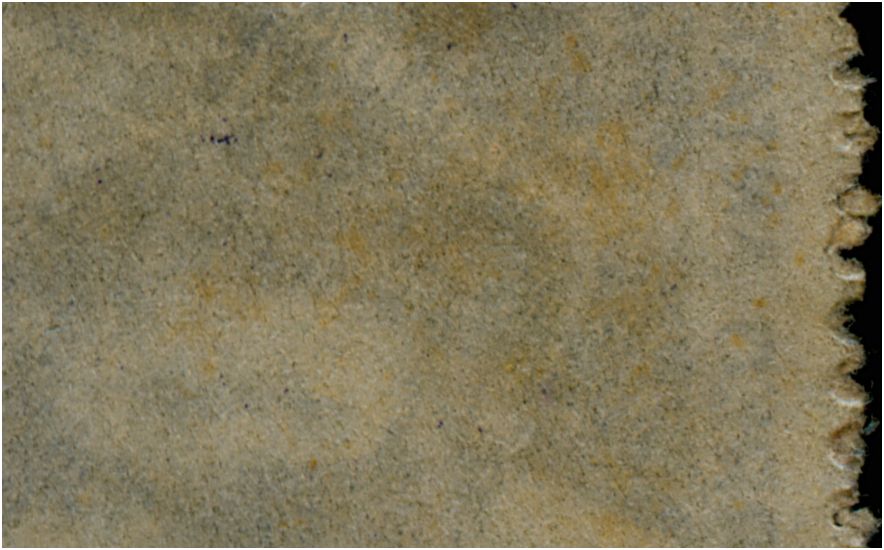
The pin points have got nothing to do with the paper mesh structure but probably with the way the water got drained out of the paper pulp during the paper making process...
to be continued ...
No watermark, symmetrical paper mesh, longitudinal direction of paper - "M":


At first sight not a trace of paper mesh! Although!?!?
But at close distance we can see the tiny pin points!

The pin points have got nothing to do with the paper mesh structure but probably with the way the water got drained out of the paper pulp during the paper making process...
to be continued ...
- Rein
- Usuario Colaborador

- Mensajes: 6258
- Registrado: 13 Mar 2009 15:59
- Ubicación: Leiden, Netherlands
- Contactar:
Re: The Manual - G.A. Pettigiani - 2010
The 20c Antarctic 25.05.1947:
No watermark, symmetrical paper mesh, longitudinal direction of paper - "M":
the paper mesh visible:
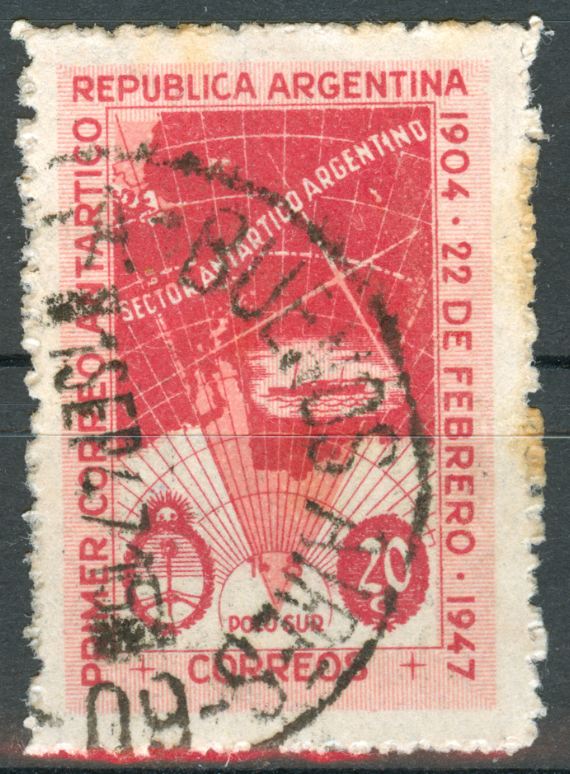
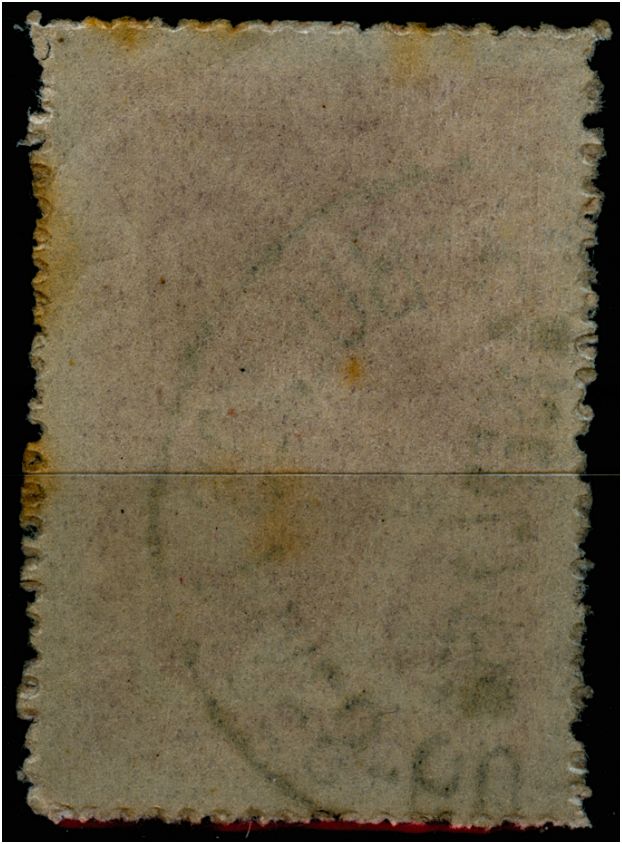
the paper mesh not visbile at first sight:
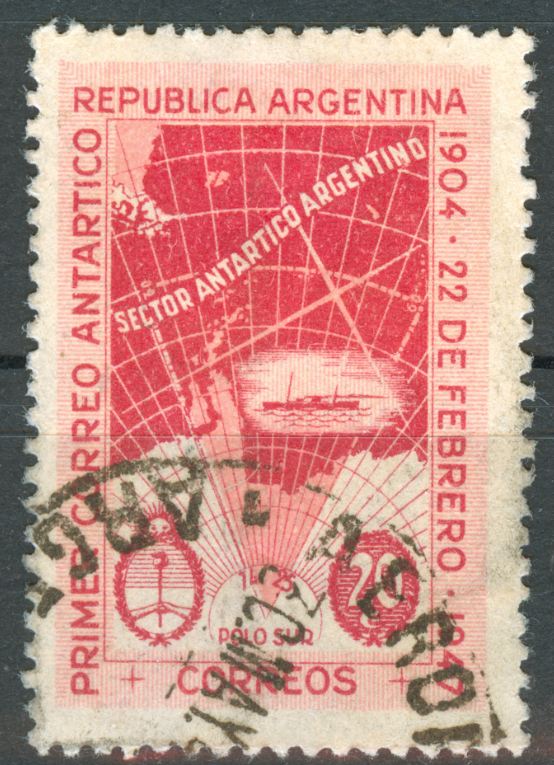
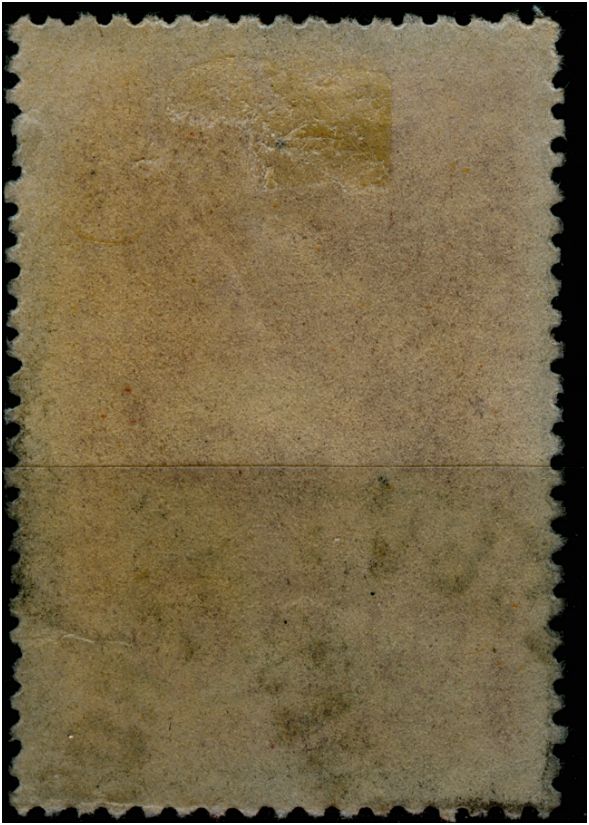
and the enlarged detail:
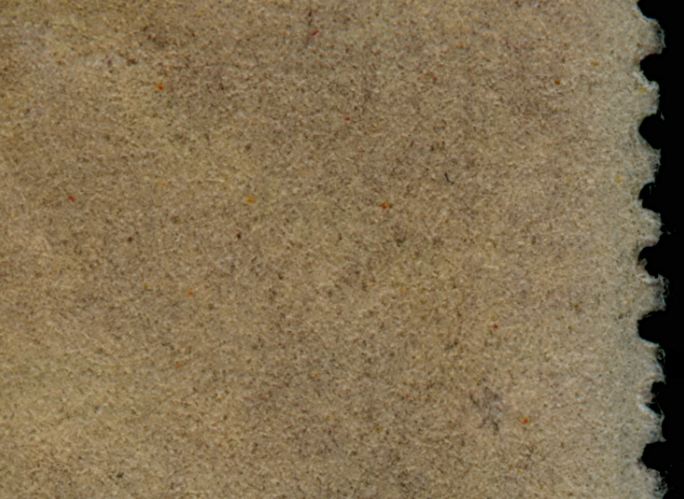
to be continued ....
No watermark, symmetrical paper mesh, longitudinal direction of paper - "M":
the paper mesh visible:


the paper mesh not visbile at first sight:


and the enlarged detail:

to be continued ....
- leonardoleidi
- Usuario Verificado

- Mensajes: 1571
- Registrado: 07 Abr 2008 20:11
- Colecciono: Catálogos especializados de todo el mundo para clasificar variedades. También catálogos de sobres, vuelos, tarjetas postales, matasellos, historia postal, perforados y cualquier otra temática.
- Canje de Sellos: No
- Ubicación: Ciudadela Sur, Buenos Aires, Argentina
Re: The Manual - G.A. Pettigiani - 2010
Thank you very much Rein, because of the comparison with stamps of other series.!!!!!
Saludos a todos
Leonardo Daniel Leidi Mora
Leonardo Daniel Leidi Mora
- Rein
- Usuario Colaborador

- Mensajes: 6258
- Registrado: 13 Mar 2009 15:59
- Ubicación: Leiden, Netherlands
- Contactar:
Re: The Manual - G.A. Pettigiani - 2010
Leonardo,leonardoleidi escribió:Thank you very much Rein, because of the comparison with stamps of other series.!!!!!
comparing the types of papers with the ones used for the commemoratives is necessary as it often gives you a better chronological range for a certain type of paper as it does for the no watermarks, the Rayos Rectos Nitidos, the Delgado, etc.!
Also of great importance is to know what type of printing method has been used as most types of paper are method specific or they rather should be!
- Rein
- Usuario Colaborador

- Mensajes: 6258
- Registrado: 13 Mar 2009 15:59
- Ubicación: Leiden, Netherlands
- Contactar:
Re: The Manual - G.A. Pettigiani - 2010
By now we have dealt with the types of paper fair enough.
By the time we get to the individual stamps we may have to get back to a particular type of paper or its subtype....
Time to get on.....
By the time we get to the individual stamps we may have to get back to a particular type of paper or its subtype....
Time to get on.....
- Rein
- Usuario Colaborador

- Mensajes: 6258
- Registrado: 13 Mar 2009 15:59
- Ubicación: Leiden, Netherlands
- Contactar:
Re: The Manual - G.A. Pettigiani - 2010
Depending on the kind of printing the reproduction process from one stamp design to a full printing sheet may vary.
All printing methods involved in the 1935-1959 period rely heavily on the photographical reproduction techniques. We can expect that all stamps of a printing sheet have the same design basically - the design of the original project.
In the offset-litho method we have established that coming from one single stamp design to a root block of 5x2 or 5x5 is the way the Casa de Moneda used to follow. The root block got reproduced several times in order to get a pane of 10x10 or 20x10 and several panes got reproduced into a complete printing sheet.
During a long career of a particular definitive stamp the design may get modified somewhat. We speak of different "types" if we can actually point out to the changes made and the various "types" normally are each others successors. Not always!
When dealing with the above step by step reproduction the particular type will be present all over the printing sheet.
During the first step on the way to the root block several minute characteristics may have crept in - not on purpose - but still! Each stamp of a root block may have one or more characteristics that will be found on quite a lot of positions in the printing sheet. A printing sheet of 400 may have 40 of the same [5x2 root block] or 16 [5x5 root block].
We can not call them "plate flaws"! Plate flaws can only occur on ONE particular position of the printing sheet, never on more!The characteristics of the root block are call "systematical flaws".
Systematical flaws will occur both in the stamps made by offset-litho and in those in typography. But in typography there was a short period when use was made of loose stereotypes [several single "stamps" bound together in a pane of 10x10 or 20x10] and these stereotypes got changed regularly or reproduced themselves and during the reproduction / copying a minute characteristic could have crept in! We only find this for the 5c Moreno and the 10c Rivadavia; we rather call them different "types" as well as they can be spread all over the printing sheet in an irregular way and not all the time in the same manner...
I will deal with these types later on - the 5c Moreno having type II and III irregularly mixed up in ONE printing sheet and the 10c Rivadavia type II and III just the same!
to be continued ....
All printing methods involved in the 1935-1959 period rely heavily on the photographical reproduction techniques. We can expect that all stamps of a printing sheet have the same design basically - the design of the original project.
In the offset-litho method we have established that coming from one single stamp design to a root block of 5x2 or 5x5 is the way the Casa de Moneda used to follow. The root block got reproduced several times in order to get a pane of 10x10 or 20x10 and several panes got reproduced into a complete printing sheet.
During a long career of a particular definitive stamp the design may get modified somewhat. We speak of different "types" if we can actually point out to the changes made and the various "types" normally are each others successors. Not always!
When dealing with the above step by step reproduction the particular type will be present all over the printing sheet.
During the first step on the way to the root block several minute characteristics may have crept in - not on purpose - but still! Each stamp of a root block may have one or more characteristics that will be found on quite a lot of positions in the printing sheet. A printing sheet of 400 may have 40 of the same [5x2 root block] or 16 [5x5 root block].
We can not call them "plate flaws"! Plate flaws can only occur on ONE particular position of the printing sheet, never on more!The characteristics of the root block are call "systematical flaws".
Systematical flaws will occur both in the stamps made by offset-litho and in those in typography. But in typography there was a short period when use was made of loose stereotypes [several single "stamps" bound together in a pane of 10x10 or 20x10] and these stereotypes got changed regularly or reproduced themselves and during the reproduction / copying a minute characteristic could have crept in! We only find this for the 5c Moreno and the 10c Rivadavia; we rather call them different "types" as well as they can be spread all over the printing sheet in an irregular way and not all the time in the same manner...
I will deal with these types later on - the 5c Moreno having type II and III irregularly mixed up in ONE printing sheet and the 10c Rivadavia type II and III just the same!
to be continued ....